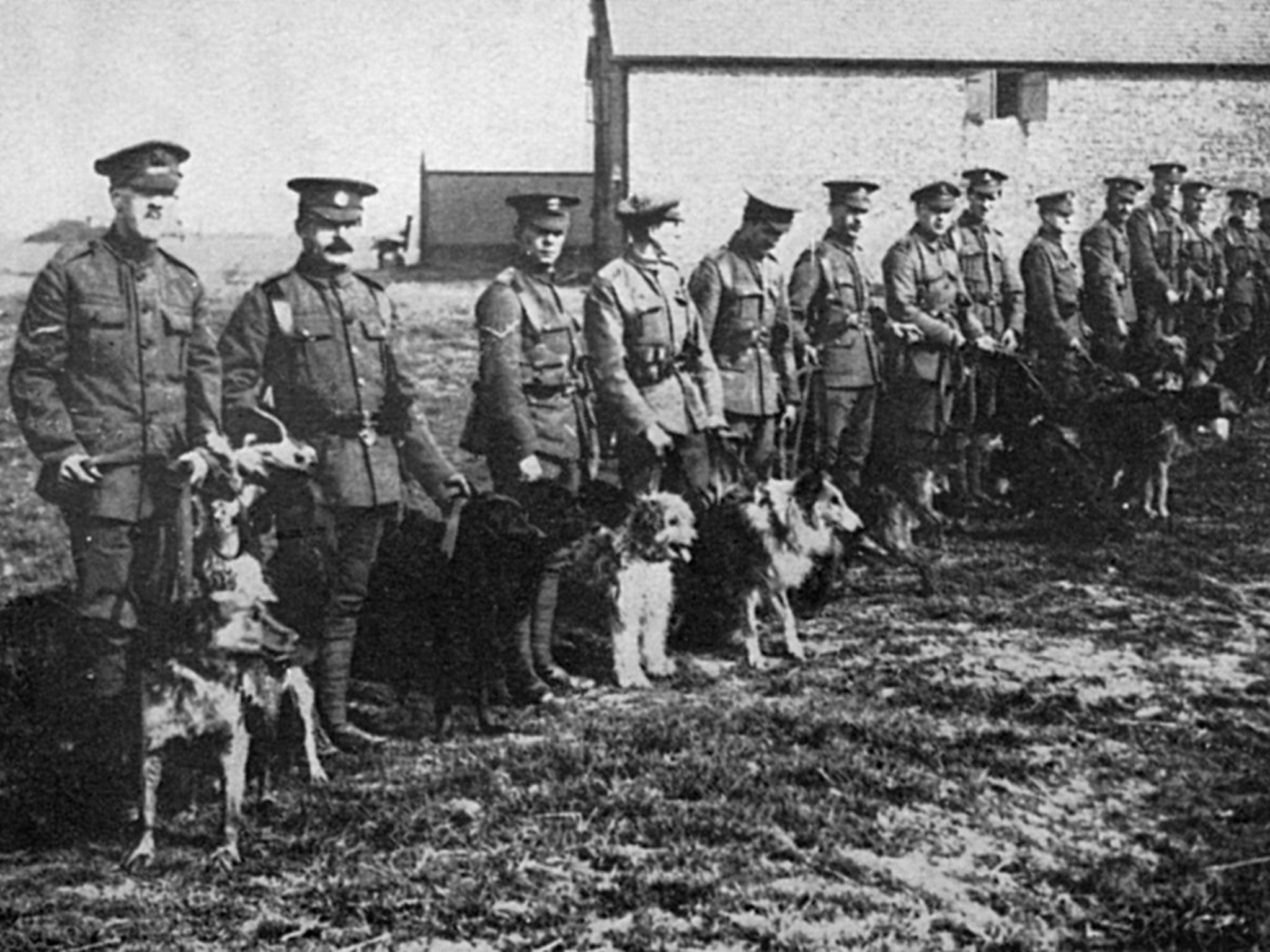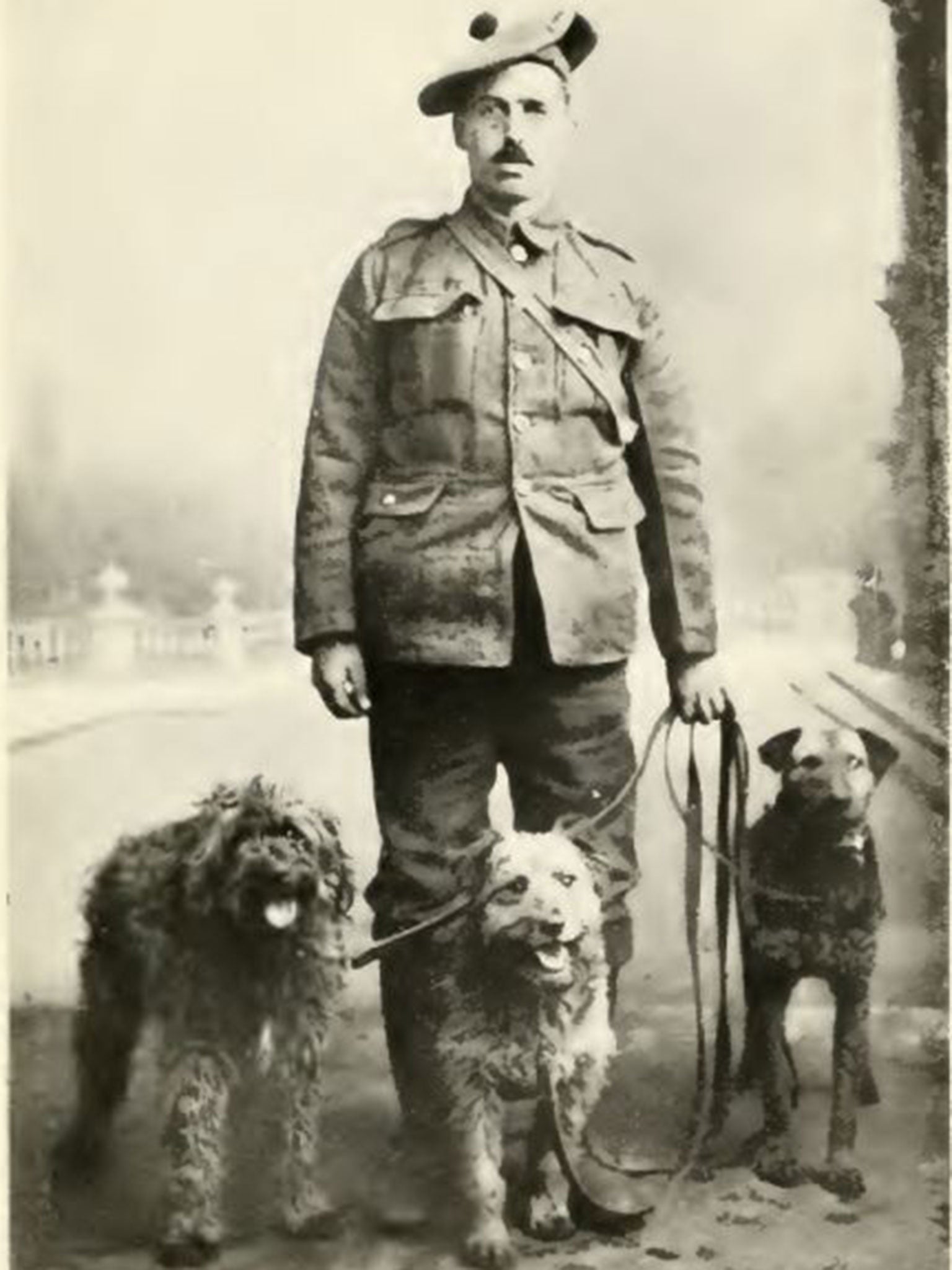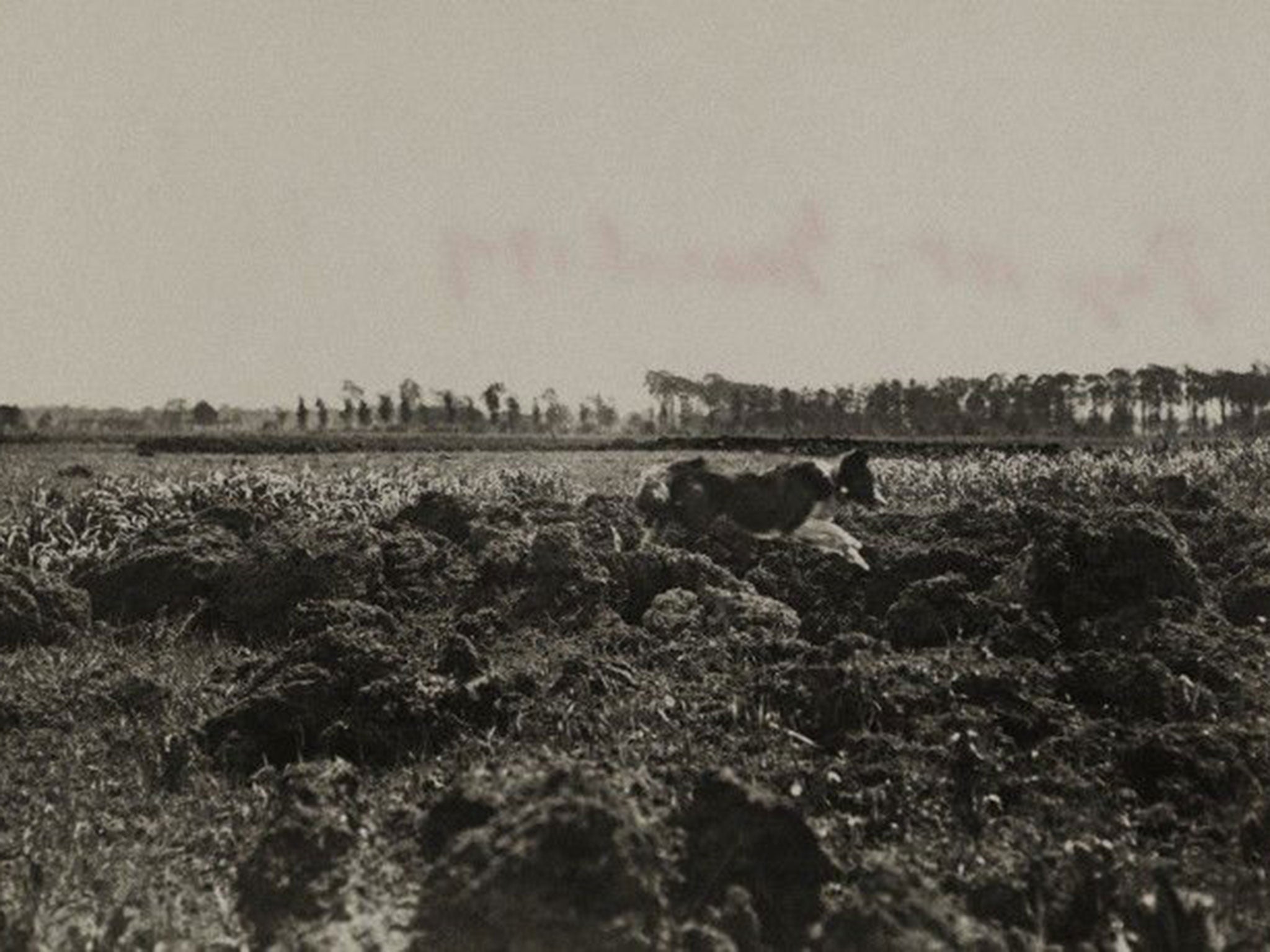A History of the First World War in 100 Moments: Battlefield heroism of a loyal messenger, Tweed the old English sheepdog
Graduates of the British War Dog School made a vital contribution to the Allied victory. Chris Green pays tribute

Your support helps us to tell the story
From reproductive rights to climate change to Big Tech, The Independent is on the ground when the story is developing. Whether it's investigating the financials of Elon Musk's pro-Trump PAC or producing our latest documentary, 'The A Word', which shines a light on the American women fighting for reproductive rights, we know how important it is to parse out the facts from the messaging.
At such a critical moment in US history, we need reporters on the ground. Your donation allows us to keep sending journalists to speak to both sides of the story.
The Independent is trusted by Americans across the entire political spectrum. And unlike many other quality news outlets, we choose not to lock Americans out of our reporting and analysis with paywalls. We believe quality journalism should be available to everyone, paid for by those who can afford it.
Your support makes all the difference.At 10pm on 2 May 1918, the men of the Queen Victoria’s Rifles were in serious trouble. Caught off guard by a surprise German attack near Amiens, they were now pinned down by heavy shelling.
The QVRs knew that they had to hold the line to prevent a major German advance. But, having been cut off from the rest of the London Regiment (to which they belonged), they were running low on ammunition and badly needed reinforcements.
In desperation, they turned to the only option they had left: an old English sheepdog called Tweed.
Stuffing a hastily scribbled message into the leather pouch fixed to the messenger dog’s collar, they watched as he sprinted off into the night with the German shells falling around him. As his keeper, Private Reid of Canada’s 13th Royal Highlanders, would write later: “He came through a Boche barrage – 3kms in 10 minutes. The French were sent up and filled the gaps and straightened out the line, otherwise Amiens would be in the hands of the Germans.”
Putting the fate of a battalion of men in the hands of a humble canine may sound like madness, but carefully trained messenger dogs played an important part in the First World War, as communication on the Western Front was frequently rendered impossible by heavy bombardments. Commanders who needed to send a crucial message could send a human runner to deliver it – but dogs were much faster and considerably less likely to die.
The leader in the field of dog training was Lt-Col Edwin Richardson, a canine enthusiast who had studied the history of their role in warfare before the outbreak of war. In 1917 he and his wife established the British War Dog School at the request of the War Office, training certain breeds of dog to become either crack sentries or, like Tweed, message carriers.
The initiative was less eccentric than it may have seemed. According to Bryan D Cummins, the author of Colonel Richardson’s Airedales : The Making Of The British War Dog School: “Britain entered the First World War as the only major European nation that did not have an active military dog programme. The others – including Germany, France, Italy, Sweden, Belgium, Bulgaria, Russia and Holland – all had significant canine units functioning in various capacities. It would not be until halfway through the war – and after dogs had demonstrated their worth in battle in unofficial capacities – that the authorities came around.”

Candidates for the War Dog School initially came from Battersea Dogs’ Home in south London, but as demand increased – the dogs’ service was often cut short, for obvious reasons – members of the public were asked to donate their pets. According to the messenger dog record book at the Imperial War Museum, one little girl said: “We have let Daddy go to fight the Kaiser, and now we are sending Jack to do his bit.” Another woman wrote: “I have given my husband and my sons, and now that he too is required, I give my dog.”
Many of the War Dog School’s graduates went on to serve with distinction on the Western Front: for example, Wolf and Prince, two airedales who were the first to bring news of the Canadians’ victory at the Battle of Vimy Ridge in 1917; and Boxer and Flash, an airedale and a lurcher who played a crucial role in the Battle of Kemmel Hill in 1918, despite having to run “belly deep in mud”.
Stories of the dogs’ exploits have survived through Richardson’s exhaustive chronicles, although some have become embellished over time. Most notable in the latter category is the tale of airedale Jack, who in 1918 supposedly saved an entire battalion by delivering a vital message despite incurring horrific injuries on the way and dropping dead at his keeper’s feet. According to legend he was awarded a posthumous Victoria Cross, but no record of such an award exists. The fact remains, however, that, as Cummins puts it: “With untold thousands of lives saved by canine soldiers and the freeing of personnel for other military endeavours, military dogs more than proved themselves.”
Tweed was a favourite of Richardson’s despite his breed, which was regarded as inferior to others when it came to military service. (Airedales were considered the best.) He appeared dim-witted when he arrived for basic training and Richardson was close to giving up on him. Then his more patient wife, Blanche, took over, and Tweed began to thrive. He eventually served for six months, even surviving the horrors of the Battle of Passchendaele.

In his book, Forty Years With Dogs, Richardson wrote: “Tweed was a dog not easily forgotten. He was a fine, large, rough-coated English sheepdog and a more honest looking fellow would be hard to find.
“His demeanour in war always seemed to me typically British, carrying as it did a quiet dignity and with no desire to quarrel, but at the same time when he did get going there was no doubt as to the certainty of his methods.”
Tweed’s heroics did not end on 2 May 1918. According to Pte Reid, whose account is quoted by Richardson in his book British War Dogs: Their Training And Psychology, six days later he successfully carried three messages which alerted Allied commanders to a planned German advance.
“I was with the Australians’ 48th Battalion,” Pte Reid wrote. “They had moved forward, no runner could cross the open in the daytime – pigeons could not fly at night, they were in a bad place, so they sent for Tweed.
“He made three runs at night; they sent him back with a message that the Germans are preparing for a raid and spoiled the Huns’ plans.”
The scraps of paper delivered by the dogs were not always matters of life and death, but they could be just as important in winning the gratitude of the men, as another account from the previous year proves: “This same dog was with my Battalion, 13th Royal Highlanders of Canada, at Passchendaele on 8 November 1917,” Pte Reid wrote.
“The Battalion had to go in and support the 3rd Canadian division. The Commanding Officer wanted dry socks for his men. As there was no way to get a message back in daytime, he released Tweed with the message: ‘Moving forward tonight. Send socks for men and some SOS lights.’”
Tomorrow: A sister's visit to the barracks
The '100 Moments' already published can be seen at: independent.co.uk/greatwar
Join our commenting forum
Join thought-provoking conversations, follow other Independent readers and see their replies
Comments